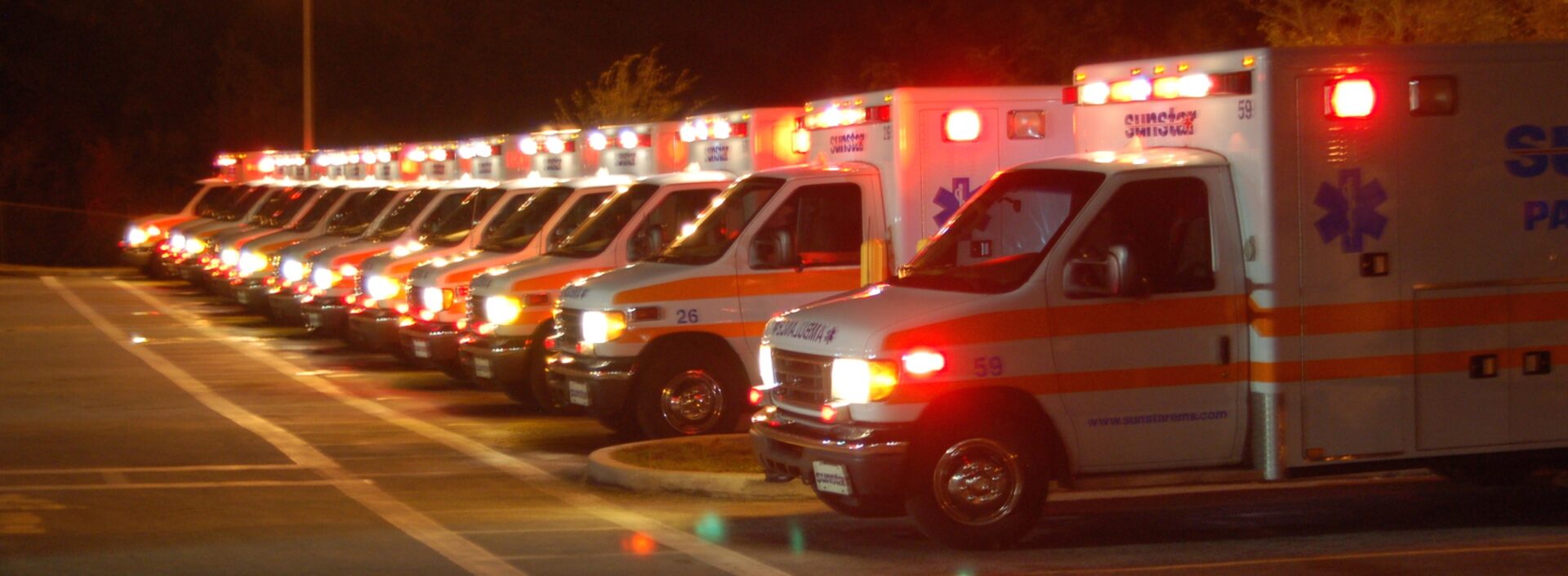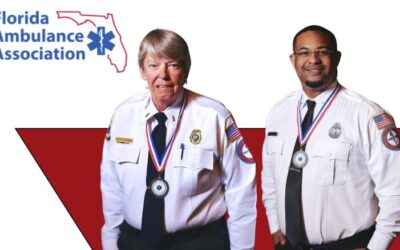You’re driving down the road when you catch a glimpse of flashing lights in your rearview mirror. Next, you hear sirens wailing. What should you do?
We’ve all been in this situation, yet many times we don’t know exactly what to do.
During a normal shift, Sunstar Paramedics’ EMTs and paramedics see people react to emergency response vehicles in many different ways.
Some drivers are so eager to get out of the way that they try to pull all the way from the left lane to the right, crossing multiple lanes of traffic and creating the potential for an accident. Some slam on their brakes. Conversely, other drivers are in such a hurry they try to tailgate an ambulance to make it through a light, not aware that the emergency vehicle may make a sudden stop.
It’s important to do your part in preventing another accident or becoming a victim yourself when an emergency vehicle comes your way. With that in mind, here are six tips to help prepare you for these situations:
1. If it’s safe to do so, pull over to the closest curb, either right or left.
Unlike some other states, Florida law allows drivers to pull to the closest curb, whether to the right or left, to make way for an emergency vehicle.
We’ll often see drivers in the left lane trying to cut all the way over to the right shoulder, instead of pulling to the closest curb. On major roadways this especially presents a safety hazard, as drivers have more lanes of traffic to cross.
Since many Florida drivers aren’t aware they can pull to the left in this situation, make sure there is space between you and the vehicle behind you if you decide to go to the left, as this move may surprise the driver behind you.
2. Respect the “Move Over Law.”
If you come up towards an emergency vehicle stopped along the side of the road, you should move over one full lane. And if you can’t get over safely, slow down to 20 miles per hour below the speed limit. The sooner you spot the emergency vehicle, the sooner you should start moving over. Drivers caught not adhering to this law will receive a citation.
3. Don’t get distracted by what’s going on in the emergency situation.
You must stay aware of your surroundings. Put down your cell phone and make sure you can hear what’s happening around you. Keep one window open, if you have to, and lower your radio volume to a manageable level. Be alert to other emergency vehicles that may be responding to the same incident.
Then, as you pass the situation, don’t be distracted by roadside activity. Never stop to take photos. When you’re visually distracted by emergency lights or the scene of an accident, you’re more likely to veer in the direction you’re looking. Your hands follow your eyes so keep your focus on the road and the direction you’re intending to go.
4. Follow safe driving practices.
If you can’t find a safe place to pull over, stay in your lane, and slowly come to a stop until the emergency vehicle passes you.
Don’t do anything that you wouldn’t normally do when driving, such as going through an intersection when the light is red. If an emergency vehicle operator needs you to do something, they will direct you, and they would never force you through an intersection on red.
Also, keep a safe distance behind an emergency vehicle: It’s recommended to stay back at least 500 feet away.
5. Don’t panic.
People tend to freeze when they see flashing lights or hear a siren. If this happens to you and panic sets in, slow down, take a deep breath, and look for the closest curb to pull over safely. If you’re near a curve or a hill, get beyond this area before pulling over.
It’s better to take a few seconds to look around before making a move, than to make an ill-advised move out of haste. And use your turn signals to let others know your intentions. Then, before re-entering the road, scan your mirrors to make sure it’s safe to do so.
6. Never try to pass an emergency vehicle or speed up to stay ahead of it.
Don’t try to out run an emergency response vehicle to avoid stopping or pulling over, and don’t speed up trying to keep distance between you and an emergency vehicle behind you. Just pull over.
Pedestrians and bicyclists also need to safely make way for emergency vehicles. Don’t try to run across the street to beat an ambulance or police vehicle. It’s difficult to judge a vehicle’s speed as a pedestrian or cyclist. Move back a safe distance from the roadway in case another driver panics and loses control of their vehicle.



